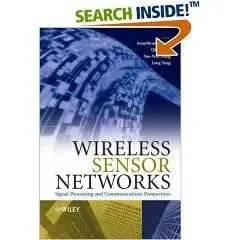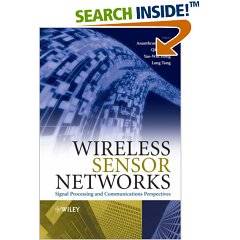Ananthram Swami, Qing Zhao, Yao-Win Hong, Lang Tong, " Wireless Sensor Networks Signal Processing and Communications"
Wiley (December 4, 2007) | ISBN: 0470035579 | 416 pages | PDF | 3 Mb
Wiley (December 4, 2007) | ISBN: 0470035579 | 416 pages | PDF | 3 Mb
A wireless sensor network (WSN) uses a number of autonomous devices to cooperatively monitor physical or environmental conditions via a wireless network. Since its military beginnings as a means of battlefield surveillance, practical use of this technology has extended to a range of civilian applications including environmental monitoring, natural disaster prediction and relief, health monitoring and fire detection. Technological advancements, coupled with lowering costs, suggest that wireless sensor networks will have a significant impact on 21st century life.
The design of wireless sensor networks requires consideration for several disciplines such as distributed signal processing, communications and cross-layer design. Wireless Sensor Networks: Signal Processing and Communications focuses on the theoretical aspects of wireless sensor networks and offers readers signal processing and communication perspectives on the design of large-scale networks. It explains state-of-the-art design theories and techniques to readers and places emphasis on the fundamental properties of large-scale sensor networks.
Wireless Sensor Networks: Signal Processing and Communications :
Approaches WSNs from a new angle – distributed signal processing, communication algorithms and novel cross-layer design paradigms.
Applies ideas and illustrations from classical theory to an emerging field of WSN applications.
Presents important analytical tools for use in the design of application-specific WSNs.
Wireless Sensor Networks will be of use to signal processing and communications researchers and practitioners in applying classical theory to network design. It identifies research directions for senior undergraduate and graduate students and offers a rich bibliography for further reading and investigation.



